Fixing checks in table with catalytic finish
I have a Saloom maple dining room table with a catalytic finish. When the table was delivered to me in August of 2006, there were two tiny cracks in the finish that you could only see if the light hit it just right. The cracks were about 1/2" long or less in August of 2006 when the table was delivered and now they are about 1" long. I am not a woodworking expert and did not know that the cracks were a problem. This week I contacted Saloom, the manufacturer, and they claim (VERY rudely I might add--I wrote them a letter and they called me back and it was one of the most hostile and confrontational phone call I have ever received) they can tell from the pictures that the cracks are cracks in the wood, not the finish, and that it is not their problem. Can you tell from the pictures whether the cracks are just in the finish or in the wood? Is there anything I can do to stop the cracks from getting bigger? Or should I wait until the finish starts chipping off and then refinish the whole table? The cracks are not noticeable unless the light hits them just right, but they are very slowly getting bigger and the finish is starting to curl at the edges of the cracks and I would like to stop them, if I can. Thanks.
Here is a link that might be useful: pictures of cracks
Comments (27)
furnone
16 years agolast modified: 9 years agoI can't tell from the photos, but it looks like the finish. Since it's well over the 1 year warranty period, you are on your own. I would contact the dealer you purchased from and see if they can arrange for a finisher to make a service call. It will probably cost you around $80-100. Maybe the dealer will participate in that. After the finisher has rendered an opinion on the nature of the defect, I would send a letter to Peter Saloom, President of Saloom, along with a copy of the repair bill and express your displeasure with the attitude of his customer service department and request reimbursement.
If you had noted the damage on the delivery slip your case would be stronger. You really can't expect the factory, who has no idea what has been spilled on, dropped on, or otherwise used or abused, to take responsibility so long after delivery. You can however, expect them to be polite and courteous as they tell you to "stuff it"...carolyn53562
Original Author16 years agolast modified: 9 years agothanks furnone. Do you think that this is something that should be repaired right away, or can I wait until it looks bad? Will the repair affect the look of the table? I know I'm out of the warranty period, but I really did think that Saloom would at least be polite too and at least help me figure out what to do if they wouldn't do an out-of-warranty repair. I had written a letter to the furniture store within the one year warranty period, but of course they deny receiving it which why I contacted Saloom directly. Then this woman from Saloom called me at work and told me, with an extremely nasty tone of voice, that Saloom is not "allowed" to talk directly with people who purchase its products (she claimed that they had to get the furniture store's permission before they could call me and ream me out), that I am not Saloom's customer, that owning a Saloom table does not give me any right to contact Saloom, that Saloom can't (not won't, but can't like they would break a law if they even told me how to fix the table) help me, etc., and then when I asked her how they could be certain from my poor quality photo that the crack was in the wood, not just the finish, she told me that they were experts and that I didn't know what I was talking about and then she just hung up on me. I was shocked. I'm a passive person and thought sending a letter to the furniture store was better than a phone call--wrong. I wasn't home when the table was delivered and the cracks were really tiny and you could only see the cracks when the light hit them a certain way so I did not pursue it because it seemed so minor--wrong again. Expensive lessons learned. I still don't see how fine cracks like the ones on my table could be from spills, things being dropped, etc., when there is absolutely no other damage to the surface in the areas of the cracks and thought that Saloom would at least send a rep out to look at the table. Of course, I also hoped that the rep would then say that the finish on a Saloom table should not be doing this and then offer some sort of accomodation. I did try to ask about the cracks on the Furniture forum in December of 2006, but never got a response and, since you could barely see the cracks, I let it slide.
Here is a link that might be useful: Dec 2006 post about the cracks
Related Professionals
Bon Air Cabinets & Cabinetry · Harrison Cabinets & Cabinetry · Tacoma Cabinets & Cabinetry · Bedford Carpenters · Lebanon Carpenters · Jacksonville Flooring Contractors · Lodi Flooring Contractors · Melrose Flooring Contractors · Wausau Flooring Contractors · Atascocita Flooring Contractors · Austin Furniture & Accessories · Bronx Furniture & Accessories · Silver Spring Furniture & Accessories · Ives Estates Furniture & Accessories · Northridge Furniture & Accessoriesbrickeyee
16 years agolast modified: 9 years agoThere is no way to repair catalyzed finishes outside of stripping and refinishing.
Most of them are very difficult to get anything to stick to, including the same finish.
A split in the wood would be just as much the manufacturers problem as one in the finish if the table was still under warrenty.carolyn53562
Original Author16 years agolast modified: 9 years agoIn case anyone is considering Saloom and read my last post, I wanted to add that I contacted Saloom by letter, so it could have easily written me a letter in response instead of calling me at work to ream me out (I had put my home number in my letter, but faxed the letter to Saloom from work so my office's number was on the fax sheet). We just built a new house and have been in it a year and one-half. During that time I have talked to lots of manufacturers, including Isenhour furniture, about warranty issues and out-of-warranty issues and never had a response like the one I got from Saloom. Every manufacturer was at least willing to look at the problem and help me correct it. And then the three out-of-warranty contacts that I had with manufacturers (Isenhour, ecounters and Kitchenaid), all three manufacturers agreed it was the fault of their product and made out-of-warranty repairs even though the warranty period had expired (if it would have been during the warranty period they would have replaced my products). Like furnone said, Saloom could have a least politely told me to stuff it, but to say that I should not have even asked for help was unreasonable. The in/out of warranty issue aside, the bottom line is that my one year and five month old Saloom table should not have this problem. Buyers of Saloom furniture beware.
carolyn53562
Original Author16 years agolast modified: 9 years agoFurnone or brickeye--I have another question for you if you are still reading this thread. I have previously recommended Saloom on the Kitchen forum and I know people over there have purchased Saloom based upon my recommendation. I'm going to put a post about my problem on the Kitchen forum. The Saloom warranty says this: "Checking or splitting of natural wood products along a "wood grain line" is a condition which may or may not occur in these wood products and is usually the result of excessive dryness of the wood, and therefore, this condition is expressly excluded from the terms and conditions of this limited warranty." Do you know if this is a typical exclusion from the warranty for wood furniture in Saloom's price range? I'm in my 50s and have never had furniture develop checks so it seems to me, based upon my limited experience, that checks should be a rare problem and covered by the warranty, at least the first year. As I read the warranty, Saloom has no responsibity for any checks that are discovered after the customer accepts delivery. Is this a typical warranty provision for wood furniture? I ask because Brickeye seemed to think that manufacturer should be responsible for check that develop during the first year, much less the first day that you own a wood table. If it isn't, I want to warn people on the kitchen about it. Thanks.
Jon1270
16 years agolast modified: 9 years agoCarolyn, I'll add some thoughts here.
No, there's really nothing you can do to prevent the cracks from worsening. As Brick alluded to, catalyzed finishes are inherently difficult (at best) to repair. The "fix," if the problem is just with the finish, is to strip off said finish and replace it.
I really don't think it's possible to tell, from those pics, what's going on. I can tell the table is maple and has some little streaks on it that are in line with the grain of the wood, and the glare alongside the dark streak betrays the fact that the finish is lifting at the edges, but that's not the whole story. It's hard to make a meaningful diagnosis without being able to touch the table, let alone try to do it from such blurry photos.
The disclaimer strikes me as pretty lame. At what point, one wonders, would the wood have become 'excessively dry?' Chances that it happens in the customer's home are pretty darn slim.
My guess is that Saloom may indeed be right that these are caused by checks in the wood, but the missing piece is that the checks were there in the wood, even before the table was built. They were most likely caused by improper kiln drying, probably because the kiln operator was trying to get the wood dried and out the door so he could get another load in and make more cash. The checks could easily have been invisible when the table was built and the finish applied, then opened at some later point and torn the finish. Anyhow, either Saloom is at fault for having bought substandard material, or Saloom was victimized by an unscrupulous lumber dealer and is trying to pass that victimization along to you.
Just a guess, mind you.
The explicit disclaimer about this problem suggests they've been confronted with it before. Saloom seems to be taking the position that such cracks are somehow normal or inevitable, but this position is flatly wrong.
Either way, you have my sympathy.
brickeyee
16 years agolast modified: 9 years agoIt sounds like the manufacturer used inadequately dried wood or fastened the table top to the apron cross grain and is now blaming everyone but themselves for the problem.
While wood does move when the humidity changes, a correctly designed table with dried wood should not be splitting from the edges.
Table tops must ALWAYS allow for seasonal movement.
There are any number of methods of fastening a top to the frame that accomplish this.
If the top is correctly floated for movement any further splitting is most often due to incorrectly dried wood.
I have plenty of antique tables (some with very wide planks) that have no splitting present after hundreds of years.carolyn53562
Original Author16 years agolast modified: 9 years agoJon and Brickeyee, thanks for your replies. We live in a new house and our humidity has been hovering between 50%-55%, so the table did not dry out here. I also thought that the disclaimer, coupled with the in-your-face phone call that I received, indicated that this is something that they have dealt with before. I think that the language in the warranty is deceptive and is intended to make people who are comparing a Saloom warranty with another manufacturer's warranty (like Canadel or Ethan Allen that do not exclude checks) think that checks are not a big deal and that Saloom's exclusion of checks is not a big deal. Unfortunately, now I know that checks are a big deal. Thanks again for your help and sympathy.
Jon1270
16 years agolast modified: 9 years agoFor what it's worth, I find Saloom's website and furniture appealing, and I can't help wondering whether your dismal phone call was the result of someone's bad day rather than a typical situation. Before you give up, I'd call again, remain absolutely calm, and ask them to explain what might've caused this problem with your table. Don't accept a BS answer as if they'd turned a light on for you, but don't get excited either. The fact is that many business get in the habit of brushing people off because there are plenty of people who have unreasonable expectations that companies can't afford to satisfy. The more you get worked up and frustrated, the easier it is for them to pigeonhole you as one of "those" people. Don't be that customer. Be the calm, reasonable but firm customer who wants to understand what's going on. If the person you get on the phone can't give you that sense of understanding, work your way up the chain. I think (hope) you have a decent chance of getting at least some relief.
brickeyee
16 years agolast modified: 9 years ago"We use 95% red heartwood in our dining tables with some small amounts of sapwood."
Fine furniture should be 100% heartwood.
Sapwood is cut away during manufacture.
This is a red flag that the quality is less than the highest."Checking or splitting of natural wood products along a "wood grain line" is a condition which may or may not occur in these wood products and is usually the result of excessive dryness of the wood, and therefore, this condition is expressly excluded from the terms and conditions of this limited warranty."
This is just pure BS.
A correctly kiln dried and glued up table top should NEVER exhibit any splitting or defects like they are describing.
The entire top will contract and expand.
Checking in a top means that the wood was not at a uniform moisture content before it was glued up, and the joints are not correctly sprung to take into account the fact that the edges of ANY table gain and loose moisture faster than the interior.
A typical spring is about 1./64 of an inch at the ends of the boards.
This small amount ensures that tops do not check under normal use.Jon1270
16 years agolast modified: 9 years agoOkay, at the risk of derailing the OP's thread, I disagree with Brick about his 100% heartwood assertion. Unless you're making fenceposts or some similar outdoor product that needs to resist rot and insects, heartwood is not inherently better. It is not stronger, it is not more stable. The colors we associate with most woods, i.e. the dark brown of walnut, the reddish brown of cherry, tend to occur naturally only in heartwood, so using 100% heartwood is often the only way to build something that is uniformly colored the way we expect it to be without resorting to stains, but unstained sapwood (which is generally much lighter in color than heartwood) is regularly used in higher-end furniture to achieve some desired effect; doing this has no structural down-side and causes no finish problems.
Brick is absolutely right about solid wood table tops needing to be given the freedom to expand and contract with the seasons, and about good joints being tighter at the ends than in the middle ("sprung") but I don't think those truths are relevant here. The checks shown in the photos are in the middle of boards, not on joints. They are not joint failures, and neither are they characteristic of a tabletop that's improperly fixed to its base. They are typical of checks caused by too-rapid kiln drying of the lumber.
carolyn53562
Original Author16 years agolast modified: 9 years agoJon and Brickeyee, thanks for your replies. Jon, if you look at Saloom's web site you will notice that they provide absolutely no contact information--no address, no phone number, no fax number and no email address. The lady who called me made it clear that Saloom does not want people who purchase their products to contact their company by phone or in writing. I thought their website was warm and fuzzy too, especially the picture of the husband and wife who founded the company. I found Saloom's fax number at another furniture site that lists the contact informaiton for all furniture manufacturers and faxed the letter to Saloom. In my letter I did not ask Saloom to replace my table or even fix it. I did recite the history of the checks and that the furntiure store had not responded to the letter that I wrote to it and expressed my disappointment that a table that was less than 1-1/2 years old had these problems, but all I asked was if they could tell me what was wrong and if there was any way to stop the cracks from getting bigger or of fixing them. My hope was that Saloom, taking pride in the quality of its products, would send a rep out to look at the table and then do the right thing because the table should not have this problem--most manufacturers do do the right thing even if a product is past the warranty period. I had discovered the checks right after the table was delivered, but decided to wait to see if they were a problem because I thought I had time to do that. Then in December of 2006 (my post in the furniture forum linked above) I discovered that the warranty did not cover checks, so thought I was out of luck. However, as the checks got bigger it looked to me like they were in the finish and not the wood, and I hoped that maybe Saloom would conclude that there was a problem with their finish and do something about it. The reason I sent my letter at all was that my Kitchenaid oven, which is a few months out of warranty, broke when I used the self-cleaning feature for the first time last week and I called Kitchenaid to see if they had any idea what had happend and Kitchenaid is paying for the repair because the problem should not have happened. My good experience with KA prompted me to send the letter to Saloom. However, my bad experience with Saloom prompted me to start this thread where I have learned a lot about checks so now I feel compelled to warn the people on the kitchen forum (where I previously recommended Saloom) that Saloom's warranty is not as broad as other manufacturers' warranties, that Saloom has no customer service at all, and to warn others about the deceptive language in Saloom's warranty. The deceptive language in the warranty is what bothers me the most. It would be one thing if the warranty just said that checks are not covered. It's another thing to add all the language about checks being natural occurences, etc. because that misleads customers. I did send a letter to Saloom's president about the phone call I received, so I'll wait and see if I get any response before I post on the kichen forum, but I'm not going to hold my breath. Thanks again for all of your thoughts on this matter. I've learned a lot from your posts. I'm thankful that this forum exists so that people like me, who don't know anything about wood or woodworking, can get some answers.
furnone
16 years agolast modified: 9 years agoI agree with jon1270's assessment. I represent 2 upper medium quality furniture manufacturers who allow a certain percentage of sapwood. Stickley has little to no sapwood showing, but are about 2-3 times the cost of my lines. It depends on the market the manufacturer is targeting. In any case heartwood/sapwood has little or nothing to do with checking, it is all about drying and ambient conditions. Even when all procedures have been followed, the fact remains that wood is not entirely predictable, and season cracks do occur. Most wood movement, assuming stable ambient conditions, occurs within 3-6 months. I stand by my previous suggestion to have an experienced finisher look at it. It's possible that they can fill the cracks with an epoxy, or burn in stick, thus sealing and preventing further moisture intrusion. Then, I would write a polite letter to Peter Saloom with the expert's opinion and an explanation of how you were mishandled by his customer service department. Saloom has a good reputation in the industry and I doubt that Peter would tolerate such treatment.
carolyn53562
Original Author16 years agolast modified: 9 years agofurnone-thanks for the reply. Last week one of the guys in the furniture store's service dept told me he would give me the name of someone who might be able to look at the table, but I don't have the name yet. If I don't get a name from the furniture store, I don't know where I would even find an expert. I already sent a letter to Peter Saloom. I sent it after I received the call (I think the letter is polite, but it does express my disappointment) and probably won't write another one as I really doubt that my letter will even get to Mr. Saloom. I wish now that I had waited until I had more information about the table, but I didn't. Just curious, but what other table manufacturers would you put in the same class as Saloom? When I purchased my table I was also looking at a Canadel table, which I thought was comparable to Saloom. What other manufacturers make tables comparable to Saloom? Thanks.
brickeyee
16 years agolast modified: 9 years ago"I disagree with Brick about his 100% heartwood assertion."
Allowing sapwood in furniture is a lesser grade if furniture.
You can examine any high end furniture and you will see NO sapwood.
NONE.
Try Hinkle-Harris or other top of the line furniture.While sapwood does not represent a grading defect in the lumber itself, it is NOT acceptable in high end furniture.
High end table tops are typically glued up from pieces that often measure less than 4 inches wide.
This helps with cupping in the table top, while providing a uniform appearance and grain when correct matching is done.As you go down in quality the matching becomes poorer (under the guise of 'natural variation') and the presence of sapwood appears.
It first show up on the concealed surfaces, and in that case can represent a 'value point' by allowing more yield without causing appearance issues.
The next step down has sapwood showing.
Even if it is stained to try and match, over the long term there WILL be color shifts.It is unlikely the splits are caused by moisture intrusion. Would EXPANDS with higher moisture, and shrinks with lower moisture.
Checking cracks in the ends of wood are caused by excessive shrinkage, often with restrained construction (AKA cross grain construction).
It is not uncommon in lesser quality furniture that the movement of large tops has not been correctly allowed for.Wood has very small shrinkage along the grain, but moves perpendicular to the grain.
A table top can only be safely fastened on two of the four sides if movement is allowed for.
A table top moves as a single piece of wood. Fastening on the sides perpendicular to the grain (the lowest movement direction) will secure the top top the apron. while omitting fastening on the other two sides allows the top to move without damage.
To some extent you get what you pay for in care in design, drying, and fabrication.One of the reasons that antiques and older furniture often has the best construction techniques is that the incorrectly built pieces fell apart long ago.
There are 'tricks' used when cross grain construction cannot be avoided.
Drawer runners in a carcase are a common example.
If the runners are uniformly fastened to the sides they will lead to splitting of the sides.
By fastening the drawer runners at the front but providing a joint that can slip over the rest of the width the side can move separately.
Cross grain trim should be fastened the same way.
Even a wide top like a dresser should only be fastened at the front and narrow sides (grain running the length of the dresser), while allowing the back edge to move.mogator88
16 years agolast modified: 9 years agoI sell Saloom. I used to sell Canadel. IMO, no comparison.
I have seen checking occur in their tables a few times. Always its been the result of excessive direct sunlight. (Once in a customers home, and a few times in our showroom window. We have a southern exposure.) I once, and only once, had a table that didn't close right. It was reported immediately and they stood behind it.
When you have a problem with furniture (NOT the same as appliances) you deal with the dealer first. Call first, THEN follow up with a letter. And make follow up calls, and escalate, and DON'T WAIT. It is possible to be persistent and polite.
Saloom used to have a MUCH longer and much more liberal warranty. I suspect they were honoring too many "wear-and-tear" situations. A 1-year warranty is pretty much standard for furniture. I have complained to them asking for a longer warranty. However, in 10 years I think I have had only 1 problem that came after one year.
I'm sorry you felt they were rude to you, its nothing personal, I've been treated the same way. FWIW, by comparison, I've been treated very gently and kindly by many companies but in the end been told, politely but just as firmly, "too bad".
Could Saloom do this or that a little better? I suppose so, and I can say the same about a Canadel set. But again I've been selling Saloom products for 10 years. Nobody has combined quality and style as good as them.
Really though this needed to go through the dealer, since any replacements get shipped to the dealer, and repair reimbursements go to the dealer's account.
Jon1270
16 years agolast modified: 9 years agoBrick, I'm familiar with wood movement and proper furniture construction. You're right that there's no shortage of poorly designed stuff on the market, but I don't think that's the case with the OP's table.
Perhaps the reason we disagree about sapwood is that you're referring to furniture built in a factory environment, whereas my background is in one-off studio furniture? In a production shop, where the person choosing the wood is not the person that designed the piece being built, I'd generally agree that sapwood is better avoided. Explore the site linked below, however, and you'll see plenty of sapwood in exceedingly high-end furniture.
carolyn53562
Original Author16 years agolast modified: 9 years agomogator, thanks for your reply. The problem with Saloom is that the warranty excludes checks and then includes the language that checks are natural. I noticed the checks right after the table was delivered (I wasn't home when it was delivered) but they were so tiny and I thought I had a year to see if they really were a problem, so I didn't pursue it at that time. And then 4 months after I got the table, I found out that the warranty specifically excluded checks (see my December 2006 post in the furniture forum, linked above). I'm sure I asked the store about the warranty when I purchased my table, but a copy of the warranty was never given to me and I didn't read it until December of 2006 when I checked Saloom's web site for care instructions--I take full responsibility for not having asked for a copy of the warranty and reading it myself (although I think a copy of the warranty should have been given to me when the table was delivered). However, the exclusion of checks, coupled with the language in the warranty that checks are natural etc., makes you think that there is nothing wrong with excluding checks from the warranty and really does make a customer think that they can't pursue a warranty claim if they get a check in their table. I sent my letter to the furniture company in August because, whether checks are natural or not, I really thought that it was wrong for a new table to have them and I wanted the company to know that and, if checks are not covered by the warranty, then I thought the furniture store should have inspected the table for checks before they delivered it to me. The language in the warranty about checks being natural is what makes customers like me who experience problems with checks to not vigorously pursue them as a warranty claim. And now I learn that the language in the warranty is deceptive and that checks can be caused by defects in workmanship or material and it really is not fair to put 100% of the liability for checks on the customer. I think that my statements that Saloom's warranty is not as broad as the warranties of other manufacturers of similar quality, that Saloom's warranty includes deceptive language about the cause of checks, and that Saloom has no customer service department are accurate and I think people should know about those things if they are considering purchasing a Saloom table. I think Saloom tables are pretty and, except for the checks, I'm happy with the quality of my table and chairs. However, I can tell it won't be long before the finish starts chipping off by the checks and then my one year and 5 month old table will be an eyesore which just isn't right. I, too, thought that the Saloom tables were nicer than the Canadel tables, but I can tell you that I would rather have a Canadel table without checks than my Saloom table with the checks. I understand that Saloom wants customers to pursue warranty claims though the dealer, but Saloom could still have an email address where customers can send their questions/comments/complaints, even if all Saloom does is forward them to the dealer and tell you to contact the dealer. Canadel, Ethan Allen, Stickley, Thomasville, Century, Bernhardt, etc. all have contact information on their websites. Dealers are not always the easiest people to deal with and when you have a problem like mine that appears to be a tiny problem and seems to be excluded by the warranty, it is nice to be able to email the manufacturer with your concerns. It sounds like you have spoken to the woman who called me--LOL!
brickeyee
16 years agolast modified: 9 years ago"Explore the site linked below, however, and you'll see plenty of sapwood in exceedingly high-end furniture."
It is still an excuse for not simply cutting it away.
It is possible to conceal sapwood with careful finishing in a full custom environment.
The sapwood WILL start to show as the piece ages and the dye used to conceal it does not change the same as the surrounding heartwood.Cherry is sort of notorious for this.
The red aniline dye used to 'blend' the sapwood is fugitive, and fades, making an otherwise nice piece3 look uneven.
To further exacerbate the problem cherry heartwood darkens with the same light that fades the dye.While there are styles that can tolerate sapwood, they are not exactly 'high end'.
glennsfc
16 years agolast modified: 9 years agoYou should see what prefinished engineered flooring looks like when this happens to 'them'! It almost always is a factor of an overly moist raw material or an overly dry indoor environment.
brickeyee
16 years agolast modified: 9 years agoIf you want to use sapwood for the 'art' of it that is one thing, but it does NOT appear in high end products outside of the 'artsy' movement.
Have you ever seen a highboy with sapwood?
Queen Anne?
Hepplewhite?
Stickley or other Arts & Crafts?Jon1270
16 years agolast modified: 9 years agoAhh, the "artsy" movement. Thank you; that makes sense of your assertions. If you think reproductions of classic designs are the only furniture that counts then there's not much to argue here. You're firmly in the territory of opinion, to which you're certainly entitled.
carolyn53562
Original Author15 years agolast modified: 9 years agobump--I'm referring to this on another forum and want to make sure it doesn't fall off.
someone2010
13 years agolast modified: 9 years agoA few years ago, when I was doing kitchens, the big new thing for a very short while was oil based catalytic finish. I read about the problems with them in my industry periodical. Many people were having problems with this type of finish because if the catalist is not added perfectly, and the environment is not perfect, they will crack and check, anywhere from small cracks like you have to cracks like a shattered mirror. The finish looks fine after application, but as it cures, this problem developes. Apparently, the waterbased version works better because it is more flexible and less subject to environmental changes.
AS always, I may be wrong and if so, stand corrected.
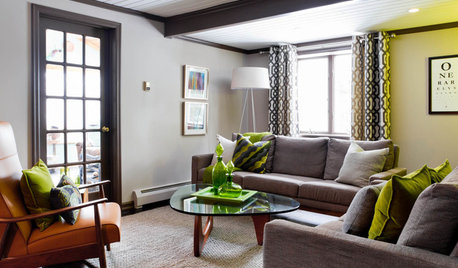
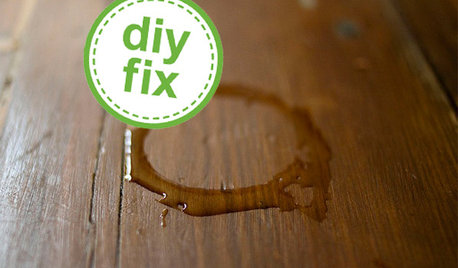
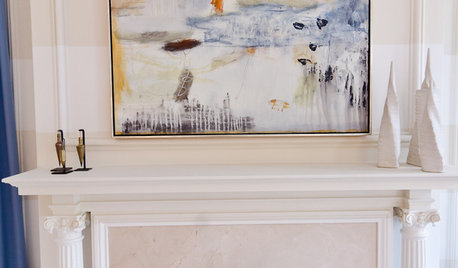


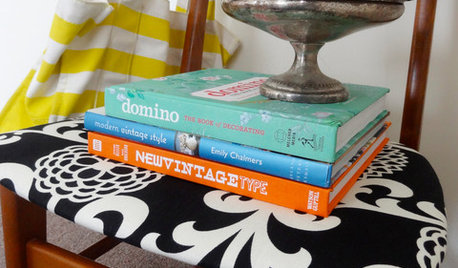
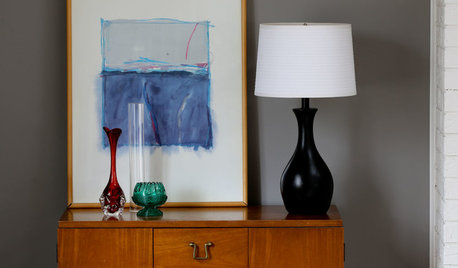
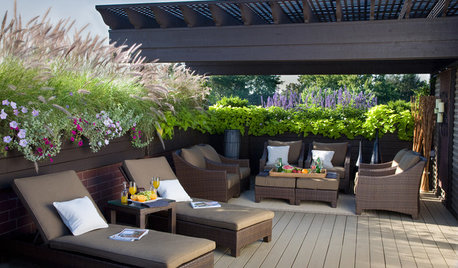
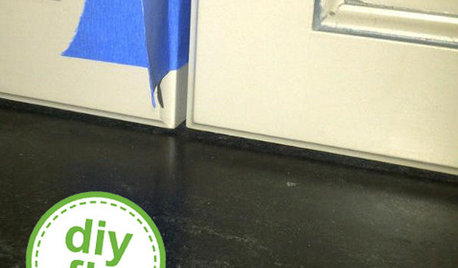









carolyn53562Original Author